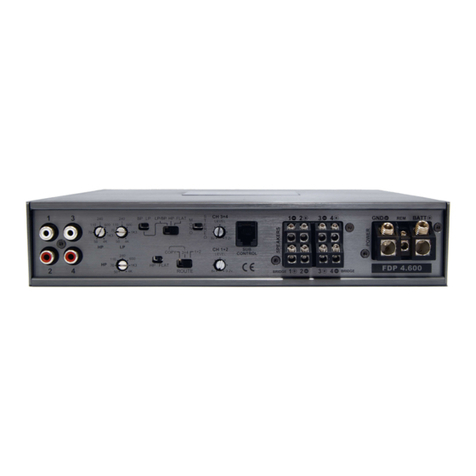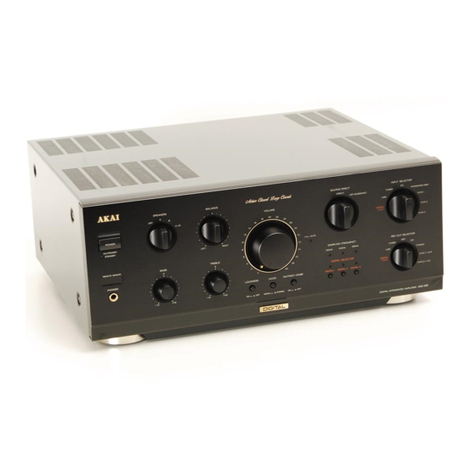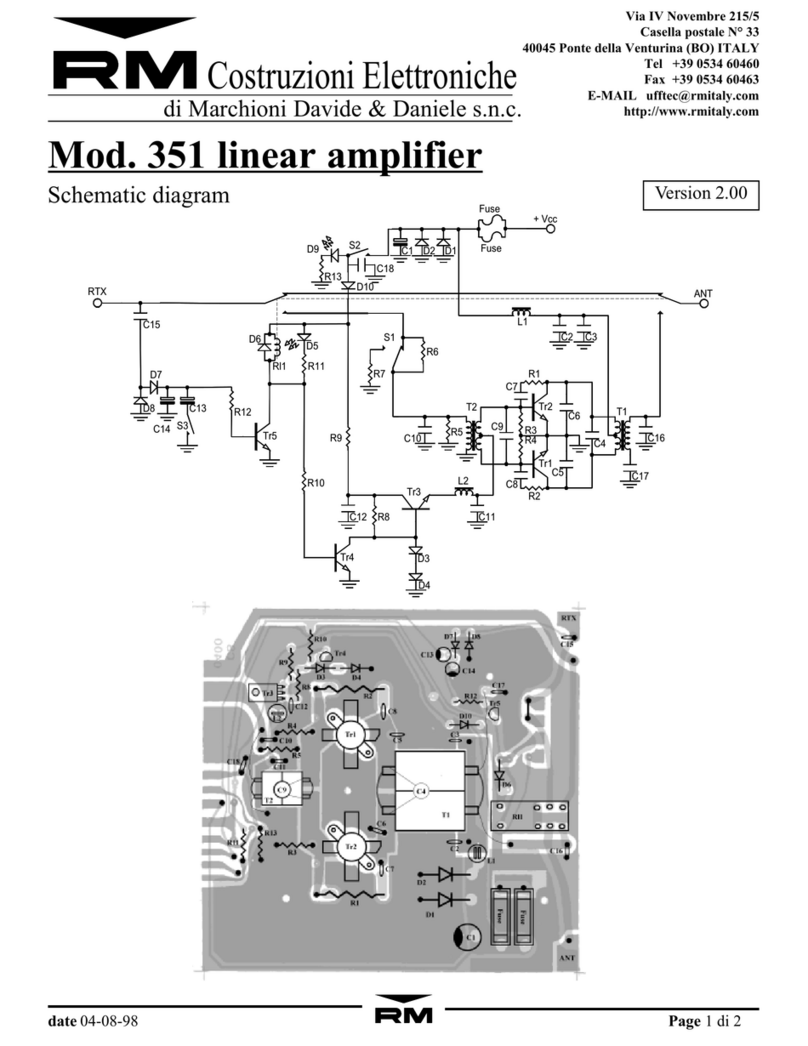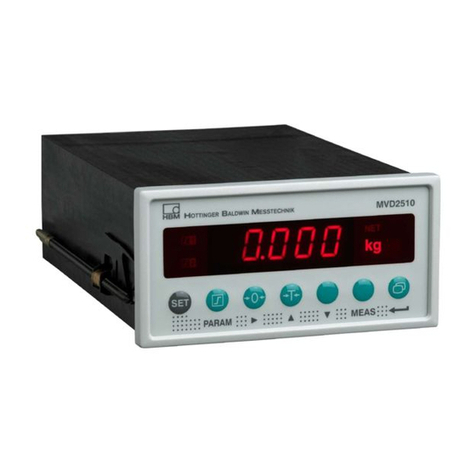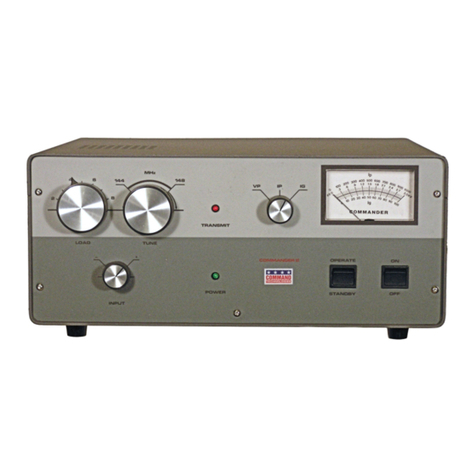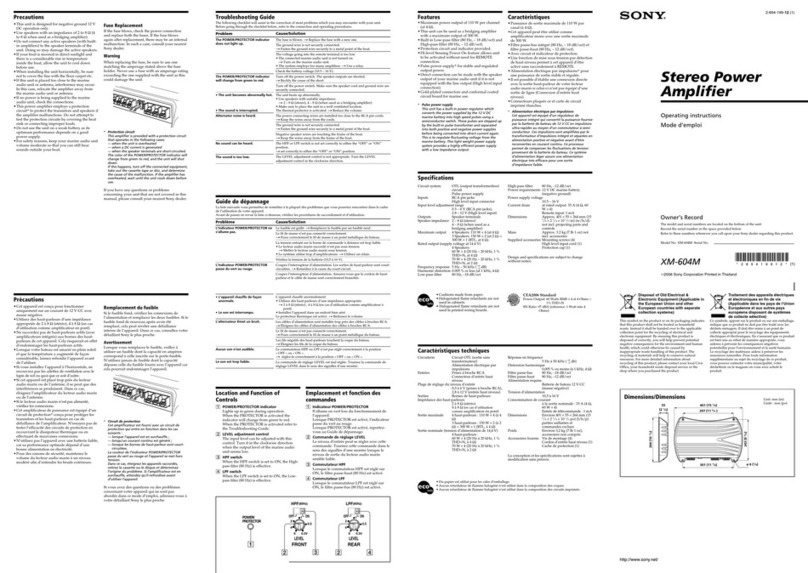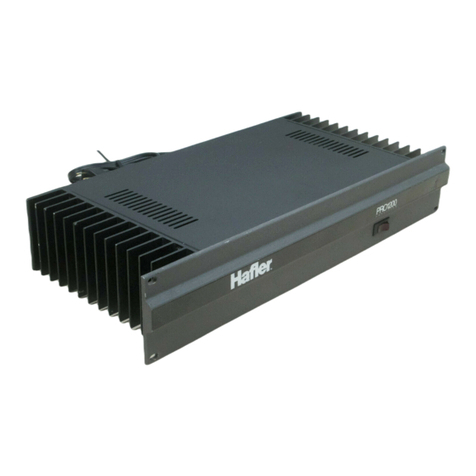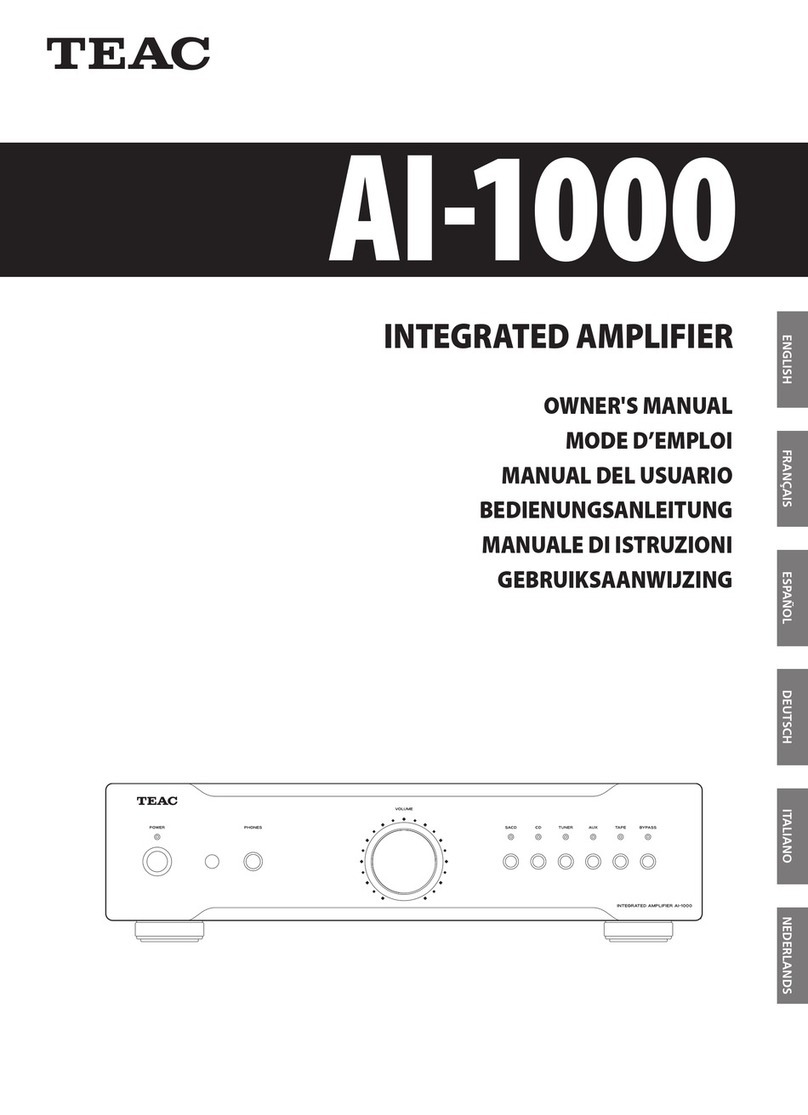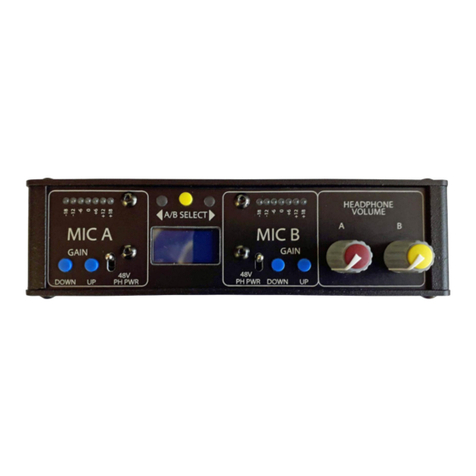BASSFACE DB2.1 User manual

Instruction Manual


The Bass Face DB2.1 amplifier is a high power 2 channel amplifier with a power
supply design inspired by that of a Mono-block amp. This is intended to supply
more than the required power, for high fidelity distortion free sound and increased
reliability.
BeforeBefore you even get the amplifier out of the box (realistically, you will have done
this already and boy it looks sweet doesn’t it!) you will need to install a suitable
wiring kit in your vehicle. You can use either a 10AWG or 8 AWG kit for this
product. If you are planning to run a more demanding application such as a pair of
6x9 speakers in a shelf or a subwoofer then we would recommend the 8AWG kit
for maximum performance. If you are planning to run multiple amplifiers you will
need to up the gauge of the wiring accordingly. Do bear in mind that many
manufacturersmanufacturers offer wiring kits that actually come up smaller in true wire gauge
than advertised.
To begin, disconnect the car battery, taking note of any required precautions
suggested by the vehicle manufacturer such as alarm or radio codes, or on board
computer or AGM battery requirements.
You need to find a suitable point on the firewall (bulkhead) to run the power wire
through. If you have to drill a hole, you will need to fit a rubber grommet to ensure
the wire does not get damaged as a short will ruin the whole setup and can be
very dangerous. The positive wire needs to go to the + positive terminal on the
battery. A fuse of appropriate size to protect the cable (for a quality 8 AWG kit we
suggest 25A) needs to be fitted in line and no more than 18” from the battery.
OnceOnce you have the cable in the car, run it back to the boot or to where you intend
to fit the amplifier. When you do this, be aware you will need to run the remote
cable and the RCA’s from the head unit back to the amp too, along with any
speaker cables going back the other way FROM the amplifier. A common mistake
is to forget that a car amplifier needs the remote 12V turn on cable to see power
for it to even work! If you only fit power and ground you’re going to get…. Nothing!
DODO NOT MOUNT THE AMP ON TO A SUBWOOFER BOX! This can result in
cracking of the circuit board and the amp will stop working. This would not be
covered under warranty for obvious reasons.
IfIf the wires you are running have to run over or go alongside other looms of the
car, try to cross them at right angles to avoid unwanted interference in the signal,
and try not to run them parallel with other cables either. If you can, run the power
and the signal cables down opposite sides of the car. This isn’t essential but if you
do get any interference once the job is complete the first thing to look at will be
separating these wires so if you can do it first it makes a lot of sense!

The absolutely most important aspect of the power install is the earth wire. This
wants to be very securely bolted to the chassis of the car. We recommend drilling
a hole (take care not to drill through your spare tyre, brake lines or anything else!)
in the boot floor and sand off any paint to the bare metal where the wire will be
connected. A bad earth is a very common flaw in installation and can cause a
number of headaches later down the line so be sure to take care in doing this. Do
NOT use a self tapping screw to try and screw the earth down, as it will come
looseloose and impair performance. Other common disasters include trying to earth to
rear light mounting bolts, boot lock mountings and other ways to “trap” the cable
in the vein hope you might get a good earth. For every volt the amplifier doesn’t
see it requires TWICE the power to create the same output. That means poor
performance and a possible broken amplifier…. DO THE EARTH RIGHT!
Once your power cable, RCA and remote lead are all securely running through the
car to where you want the amp and the earth wire is fastened securely,
somewhere close to the amp, you can fit the amplifier.
TheThe amp needs to be mounted on a solid surface, favorites are boot floors, backs
of seats etc. Wherever you do choose to mount the amp, it needs sufficient
ventilation; 2-3” around will be enough. We do not recommend mounting an
amplifier on a bass box as the vibrations can cause damage to the internals of the
amplifier over time.
YouYou are now ready to connect your speakers! Take care that the positive on the
speaker is going to the positive on the amplifier. If your speakers are connected
“out of phase” then it will severely affect bass output as the 2 speakers will cancel
each other out acoustically.
ThisThis bit is VERY IMPORTANT. You need to ensure that the load you subject your
amplifier to is within specification and of a sensible nature. This particular amplifier
is suitable for running a stereo pair at minimum of 2 ohms per side, or a bridged
mono load at 4 ohms. Just as important is to remember that as well as the actual
physical impedance you need to consider the type of load you are going to subject
your amplifier to. A single 8, 10 or 12 inch subwoofer of an appropriately matched
construction and in a nicely designed enclosure will be fine run off a DB2.1 amp
atat 4 ohms (assuming proper setup) but you don’t want to try and run a pair of
massive aluminium coned dual voice coil monster woofers off it even though on
paper you might well have a four ohm load. We obviously recommend the Bass
Face range of subwoofers and speakers for ultimate compatibility.
Time to lay on some power. Connect the earth first. Then 12V power, then remote.
Then connect in the RCA cables and you can move onto setting up the gain and
sound controls on the amplifier (the fun bit!)

Setting the “Gain” or “level” on the amp is a crucial aspect and needs to be done
with care, otherwise you can easily damage your equipment. Before we move
onto this we need to be sure the crossover settings are right for the application.
Firstly, make sure the bass boost control is set to minimum (0)
IfIf you are running Coaxial or Component speakers you first need to check the
“HPF/FULL/LPF” switch is set to HPF and that the HPF knob is set as described
below. This High Pass Filter will stop any very low frequencies from getting to the
speakers, as these will damage the speakers, especially at high volumes. As a
rule of thumb look to use 200Hz for 4” speakers, 120Hz for 5” speakers and
80-100Hz for 6” ones. As usual rules are there to be tested but these figures will
set you on the right track to a good setup.
IfIf you are not running a subwoofer with your full range speakers, you may want to
set the crossover switch to FULL this will send the full spectrum of sound to the
speakers. However, it is likely that in most cases this will result in your not being
able to listen to the system without obvious distortion at even fairly modest levels
(depending on your speakers, installation and source unit) although below the
distortion threshold in this situation it will sound as sweet as possible.
IfIf you are running a subwoofer the switch needs to be on “LPF” or Low Pass Filter,
as it describes, this will let the low frequencies pass through. We recommend a
LPF of about 100hz initially for most car woofers. Try 80Hz and 120Hz too – you
will notice the sound change.
Once your crossover settings are set up, you can move on to the gain or “Level”.
This bit is REALLY important!
First,First, disconnect all other subwoofers or speakers so that you can hear only the
speakers (or woofer) powered by this amplifier. Next, turn the level on the amp all
the way down. Choose some music that you’re not particularly keen on that has a
good range of bass, treble and vocals (helps not to get lost in the music whilst you
work on the system.)
ThenThen go to your head unit and gradually turn up the volume until you begin to hear
slight distortion. This is normally about ¾ the way up the scale. This is the
maximum setting that you will EVER use from now on – make a mental note of it.
Next, turn the head unit down from here by around ¼. This builds in a little bit of
“headroom” so should you have a track that is recorded quieter than the others or
is at a lower bit rate, you can boost the volume without pushing anything into
distortion.

Once the volume is set on the head unit, go to the amplifier and slowly start to turn
the “Level” knob up, keep going till it is at a level you are happy with (that isn’t
going to deafen you!) or until your speakers are just about to distort. If they do start
to distort, turn back down till they sound perfectly clear.
IfIf you are setting up a subwoofer the procedure is exactly the same, except that
rather than hearing distortion in the conventional sense you will hear it as an
unclean bass note – you may hear a cracking, a metallic slapping sound or a
rattle. It is CRITICAL that you detect this sound and back the amp off to stop it
NOW. If you do not perform this step you will become another sad statistic in our
“rejected warranty” book – you will be ringing up in about a week wondering why
your woofer is toasted. Don’t be this sad individual!
YouYou will notice that earlier in the text we set the bass boost to off. This is because
more often than not this EQ control is misunderstood and can cause damage. The
bass boost control ramps a range of frequencies in the bass region that will cause
more bass to be created than the signal coming in from the head unit expects. It
will also consume more power and can push a system into distortion if the settings
are not made carefully. An example of a valid use of bass boost might be where
your woofer system has an uneven response – as you turn up the gain the upper
regionregion of the output becomes strained and begins to distort but yet with low
frequencies you are able to turn up the bass without distortion. In this case, you
would go back to the beginning of the setup instructions, get the woofer playing at
a modest level and then swing in some bass boost until the distortion happens at
the same volume level, regardless of the music you are playing. Then, you would
set the gain with the bass boost control in THAT position – to take account of that
level of boost. You ABSOLUTELY cannot increase the bass boost once you have
already set the gain level – you’ll overdrive the amplifier and burn something out.already set the gain level – you’ll overdrive the amplifier and burn something out.
You have done it! Enjoy your system!

Low Pass Filter
High Pass Filter
Crossover Switch
Gain Control
RCA Input Terminals RCA Output Terminals
Bass Boost Control
Sub Sonic Filter
GND
REM
B+
Car Grounding Point Close to Amp
Car Battery
+
-
Fuse
RCA Cables
Remote Cable

To the right here is a
complete fail, the earth has
been attached to painted
metal and held with a washer
and a self tapping screw, this
will most definitely cause
serious resistance and while
thethe amp may appear to
function correctly initially, at
higher output levels, the amp
will strain and a component
within will fail very quickly.
DO NOT DO YOUR EARTH
LIKE THIS!!! PLEASE! :)
To the left, we see a hole drilled directly into the
chassis, big enough for a bolt and with access to
the nut from behind. The area has been prepared by
sanding off all the paint down to the bare metal. on
the contact side of the hole. Although you do not
need to sand off as large an area as you see here,
this was done for illustration purposes.
Here you can see the finished product, as
you can see there will be ample contact
between the ring terminal and the chassis of
the car. The bolt is the correct size to clamp
down only on the ring. It’s worth mentioning
at this point, a quick blow over with primer
will stop the metal rusting too!
As explained in the previous instructions, getting
a good quality connection on the earth is critical
for getting your equipment working correctly. If
you get it wrong, it WILL fry your amp and WONT
be covered under warranty! These pictures give
you very clear examples of good and bad
practices.
ToTo the left you can see what is commony
percieved to be a good earthing point. It is not,
there will not be enough pressure on the ring
terminal and oxidisation will occur on surfaces.
X
X
Other BASSFACE Amplifier manuals
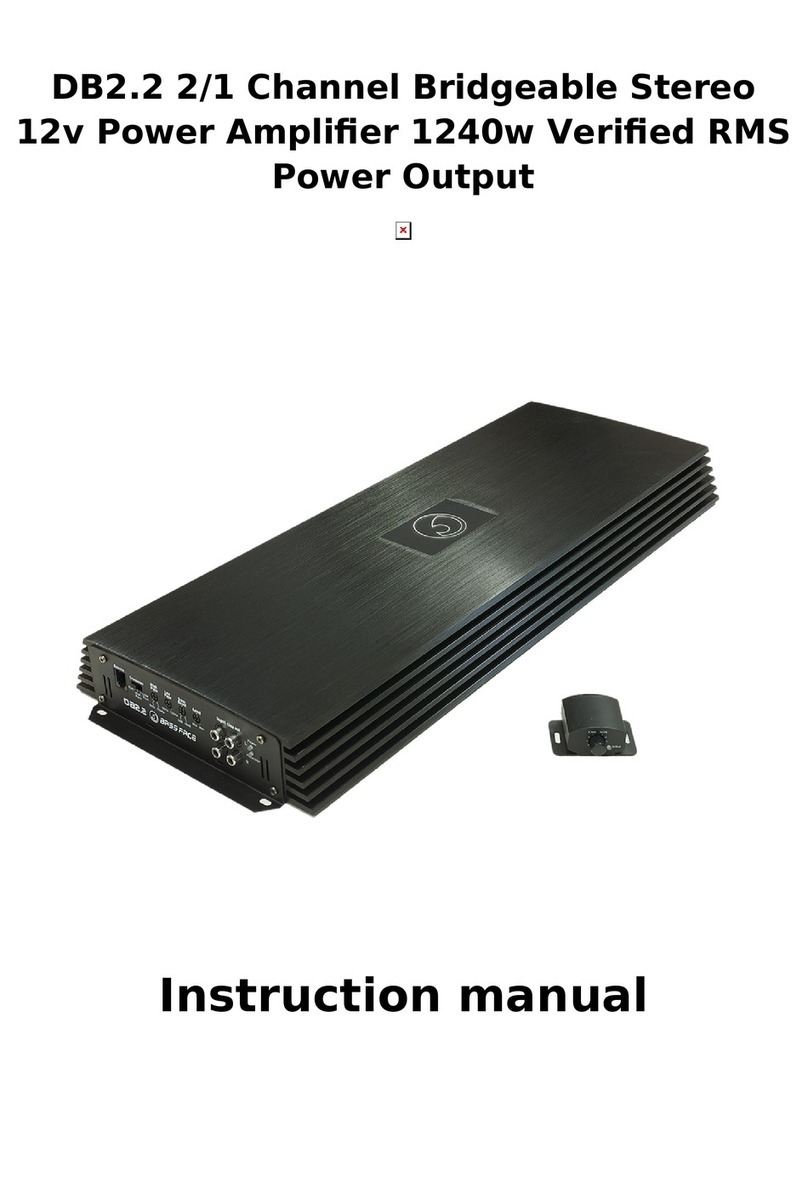
BASSFACE
BASSFACE DB2.2 User manual
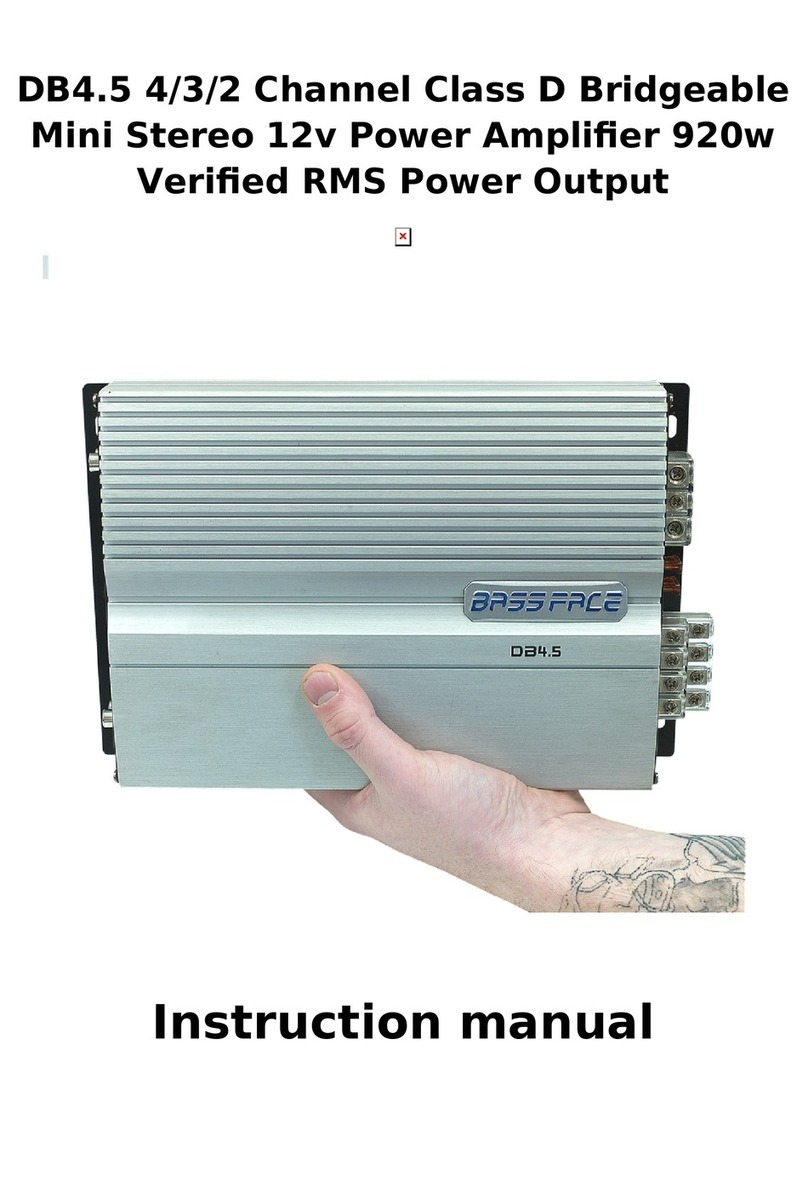
BASSFACE
BASSFACE DB4.5 User manual
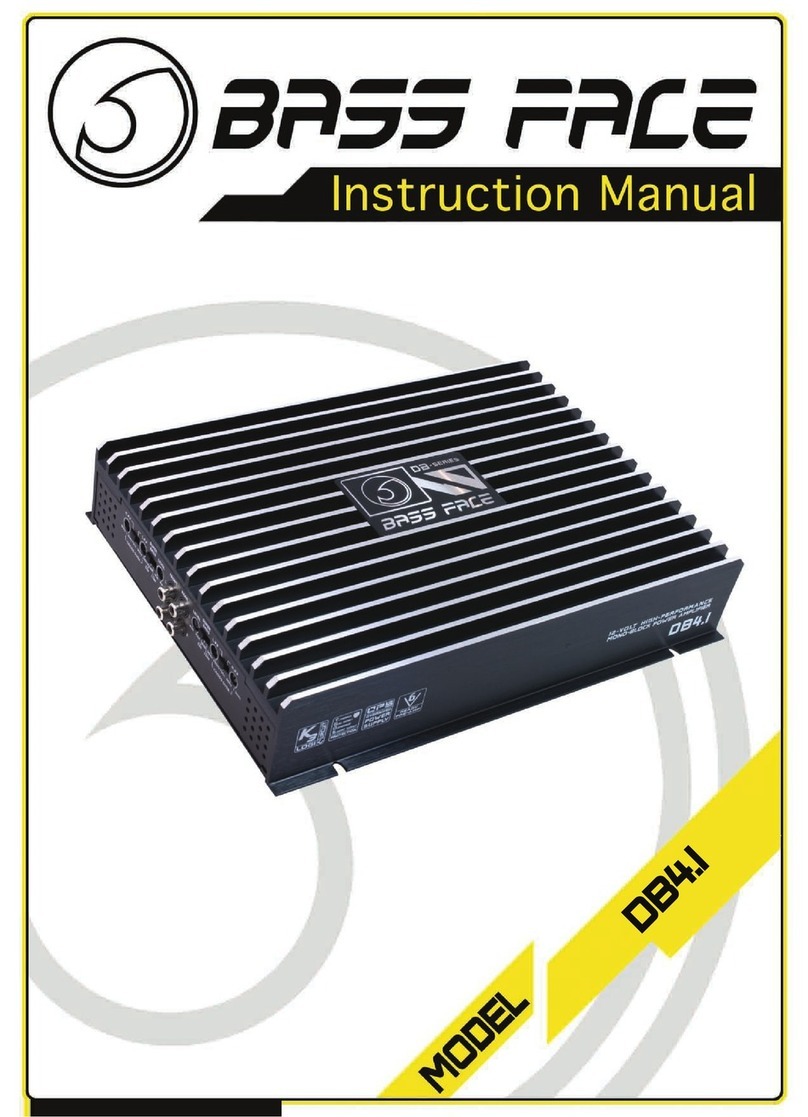
BASSFACE
BASSFACE DB4.1 User manual
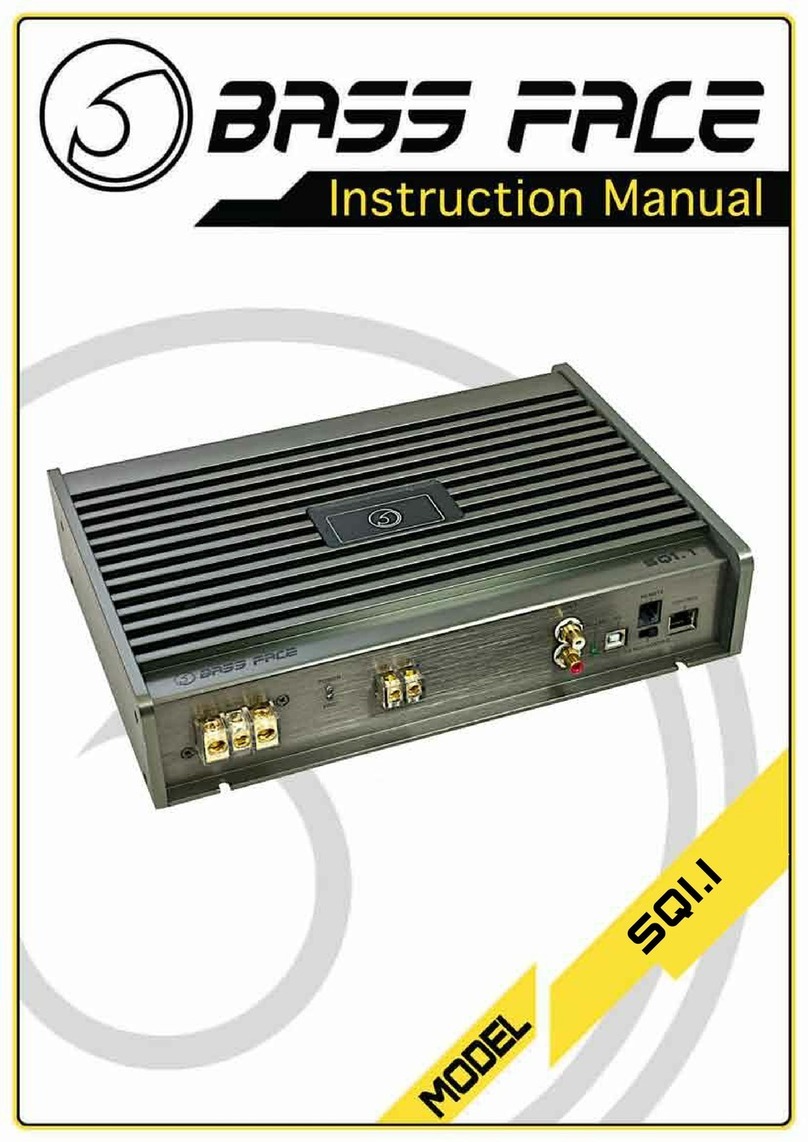
BASSFACE
BASSFACE SQ1.1 User manual

BASSFACE
BASSFACE DB1.2 User manual
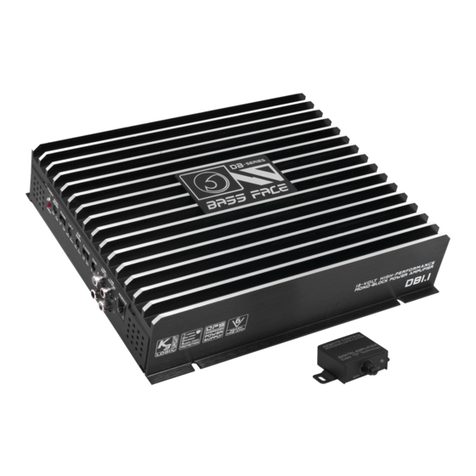
BASSFACE
BASSFACE DB1.1 User manual

BASSFACE
BASSFACE Team 5000/X1DFR User manual
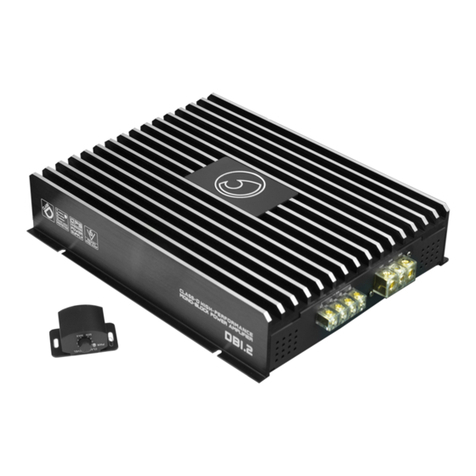
BASSFACE
BASSFACE DB1.2 User manual

BASSFACE
BASSFACE SQ 4.1 User manual
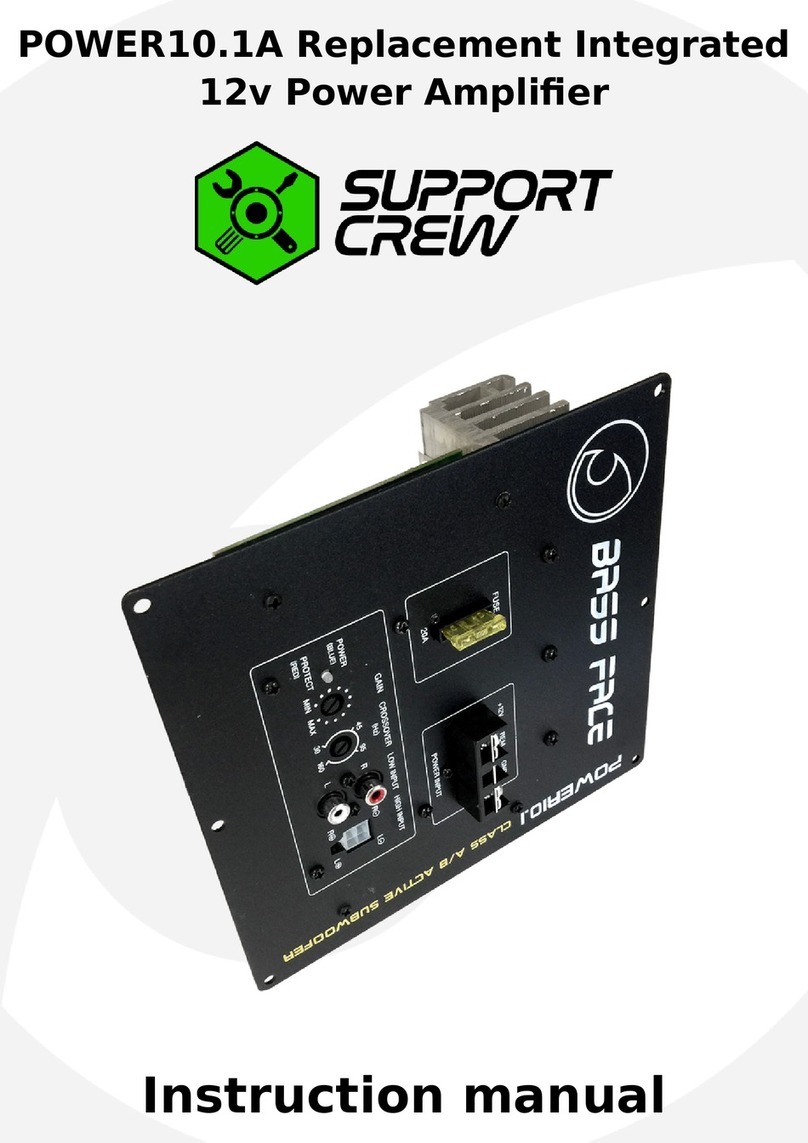
BASSFACE
BASSFACE SUPPORT CREW POWER10.1A User manual
Popular Amplifier manuals by other brands
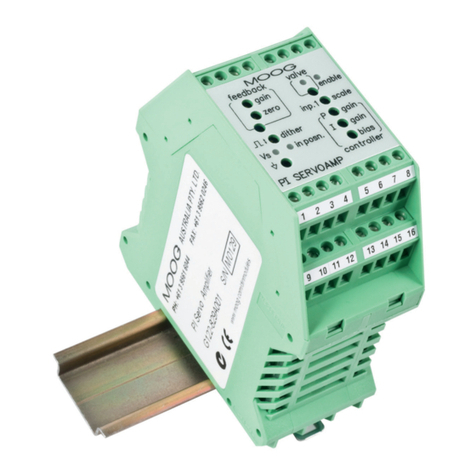
Moog
Moog G122-829A001 Application notes
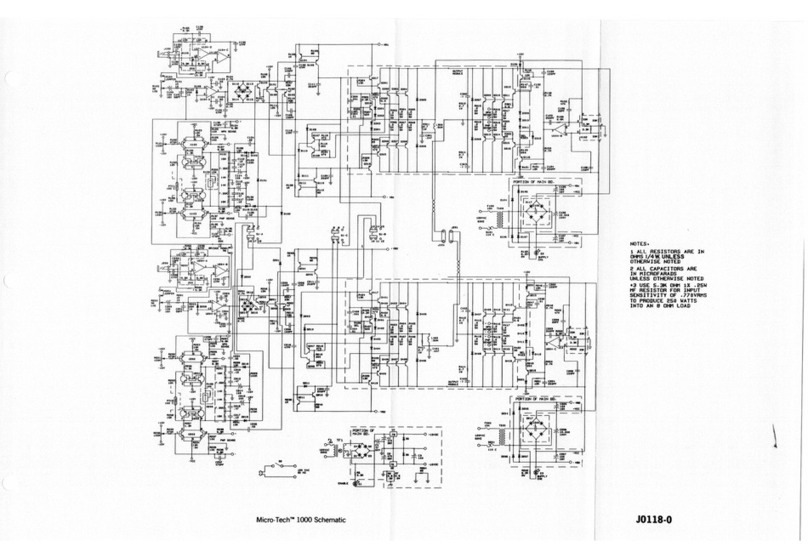
Crown
Crown Micro-Tech MT-1000 Schematic diagram
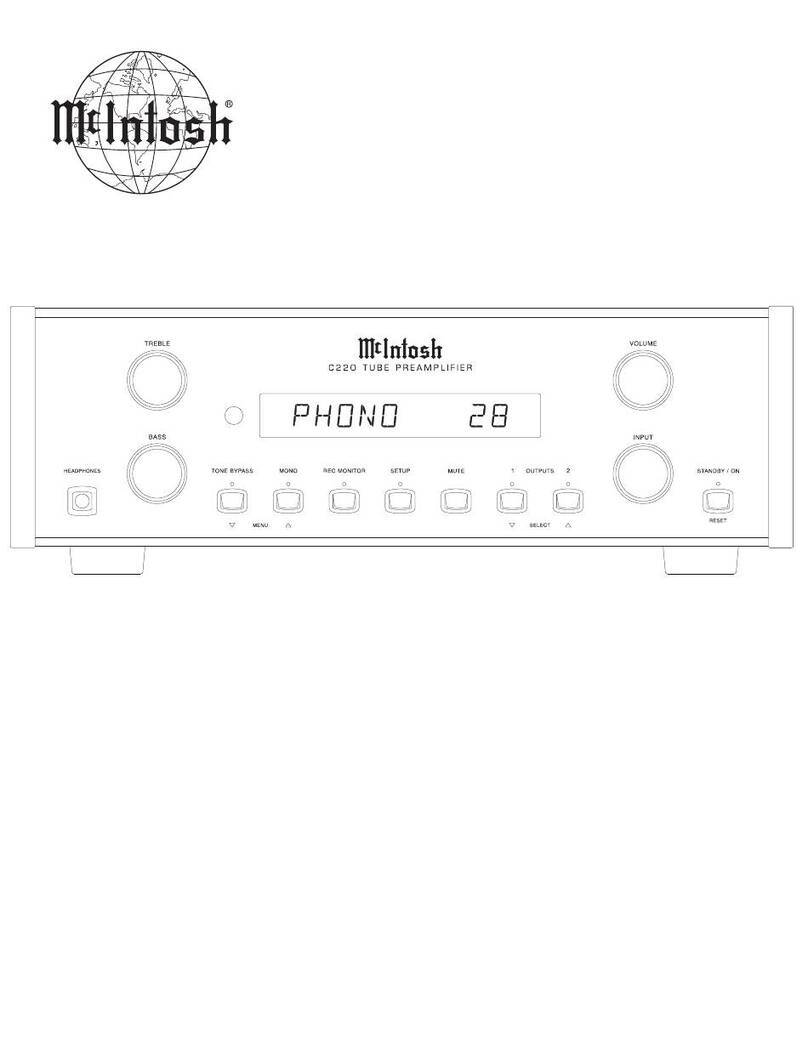
McIntosh
McIntosh C220 Service manual
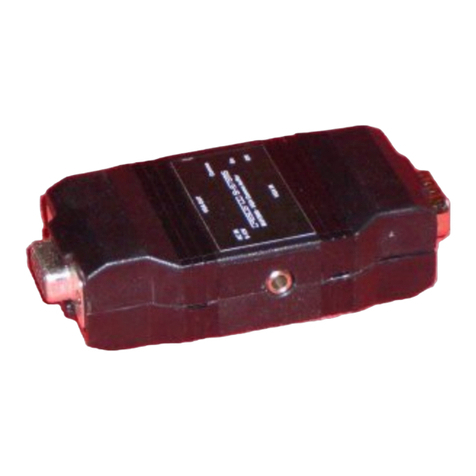
Crescendo-Systems
Crescendo-Systems BUF2000 user manual

Pioneer
Pioneer KEH-P5000 owner's manual

Hybrid Audio Technologies
Hybrid Audio Technologies U4A Owner's manual & installation guide

